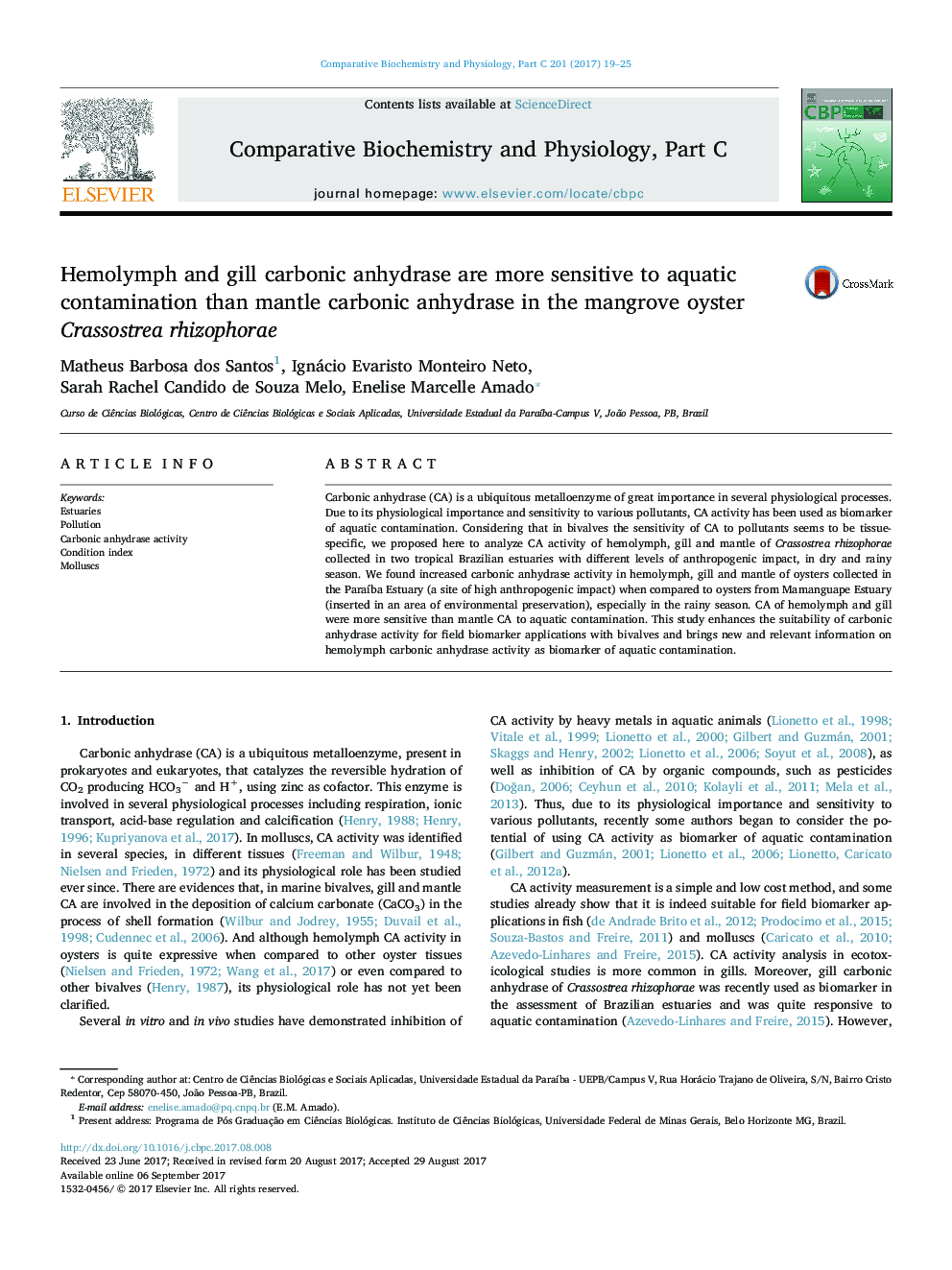| Article ID | Journal | Published Year | Pages | File Type |
|---|---|---|---|---|
| 5510554 | Comparative Biochemistry and Physiology Part C: Toxicology & Pharmacology | 2017 | 7 Pages |
Carbonic anhydrase (CA) is a ubiquitous metalloenzyme of great importance in several physiological processes. Due to its physiological importance and sensitivity to various pollutants, CA activity has been used as biomarker of aquatic contamination. Considering that in bivalves the sensitivity of CA to pollutants seems to be tissue-specific, we proposed here to analyze CA activity of hemolymph, gill and mantle of Crassostrea rhizophorae collected in two tropical Brazilian estuaries with different levels of anthropogenic impact, in dry and rainy season. We found increased carbonic anhydrase activity in hemolymph, gill and mantle of oysters collected in the ParaÃba Estuary (a site of high anthropogenic impact) when compared to oysters from Mamanguape Estuary (inserted in an area of environmental preservation), especially in the rainy season. CA of hemolymph and gill were more sensitive than mantle CA to aquatic contamination. This study enhances the suitability of carbonic anhydrase activity for field biomarker applications with bivalves and brings new and relevant information on hemolymph carbonic anhydrase activity as biomarker of aquatic contamination.
